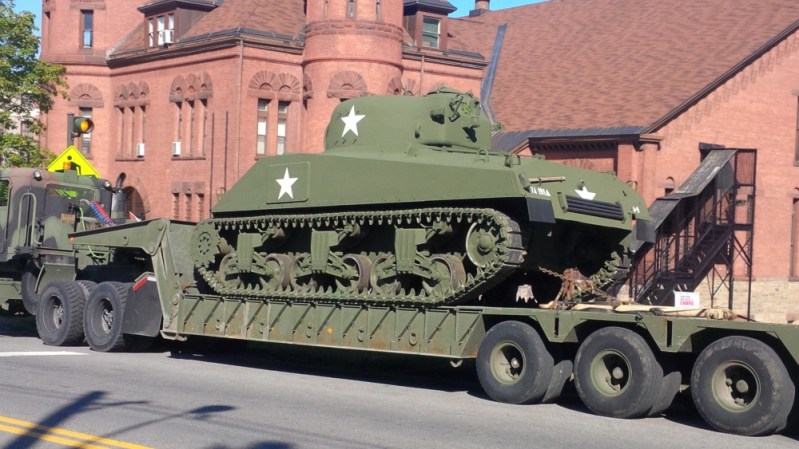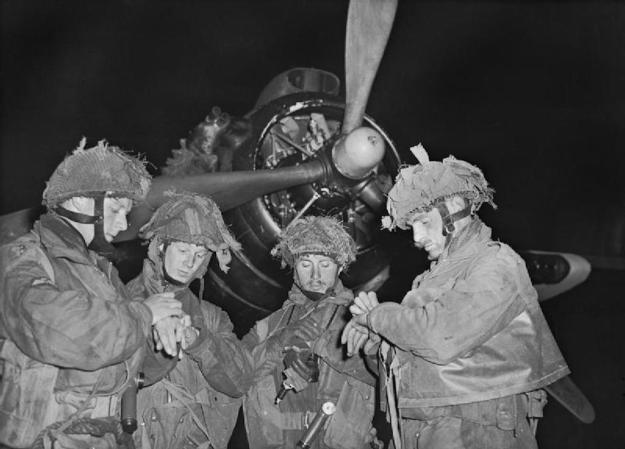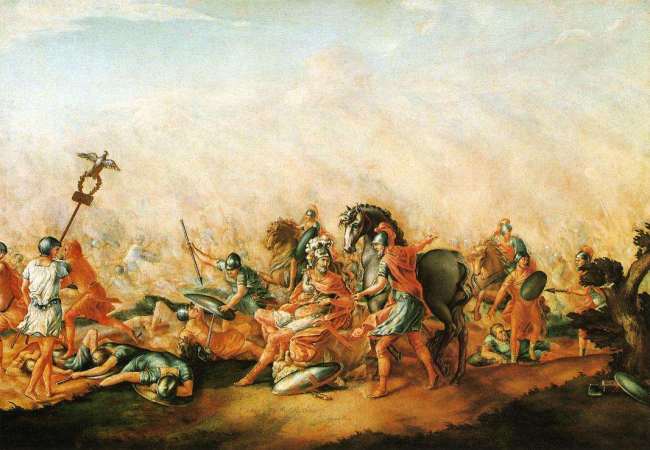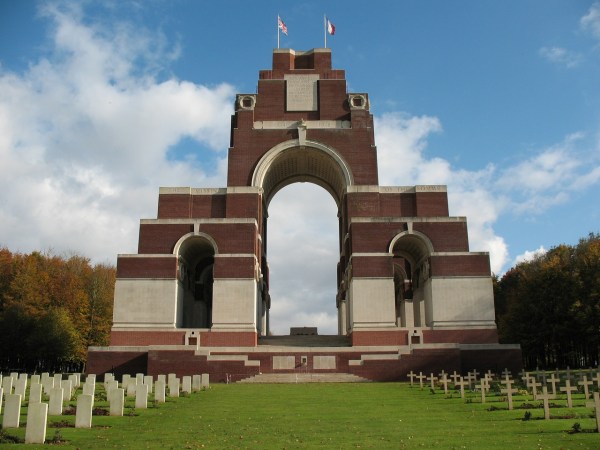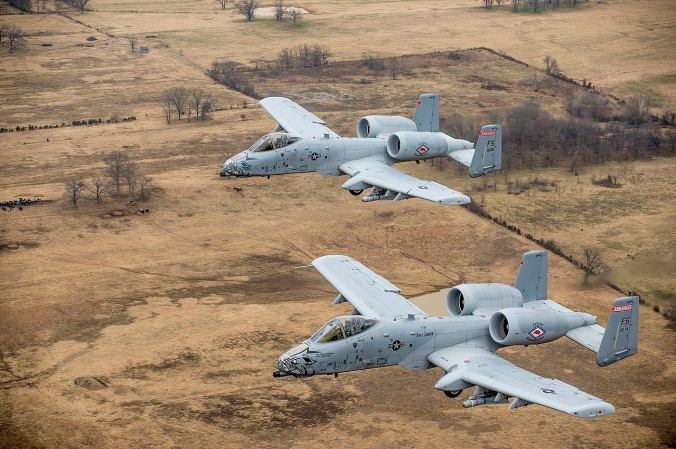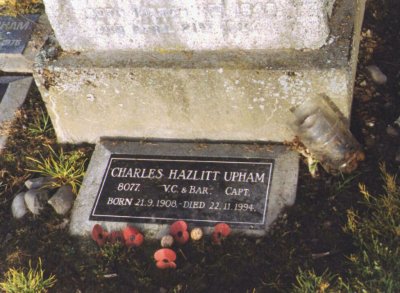Generals “rediscover” vertical envelopment every few years, and even fairly casual followers of military news are sure to have heard the phrase. Even still, it’s a fairly wonky term that plenty of folks, even regular readers, military game players, and history buffs won’t necessarily know.
Luckily, it’s not too hard to explain. The Navy created a video in the 1950s to explain the concept — and its importance in Atomic-Age warfare — to its officers and sailors.
A quick bit of background that the Navy would’ve expected Marine and Navy officers to know, but average readers might not: Vertical envelopment is an evolution of an ancient strategy known as “envelopment.”
The idea was to surround (or envelop) your enemy, and it’s not exaggeration when we call this tactic “ancient.” One of the greatest historical uses of the strategy came at the Battle of Cannae, which, according to some sources, may have been the bloodiest battle in the history of the world. A massively outnumbered Hannibal of Carthage managed to draw Rome’s legions against his formation’s center. Then, Hannibal sent more mobile units around the Roman legions, hitting them on the flanks and rear.
The Roman legionnaires, now surrounded, were slowly whittled down by Carthaginians, leading to one of Carthage’s greatest victories. A few thousand legionnaires escaped, but the vast majority of them were killed.
The famous “pincer” movement, when an attacking force hits its enemy from two sides, is sometimes known as the “double envelopment.” It’s two forces working to surround the enemy at once.

A screenshot shows the final maneuvers of Hannibal’s envelopment of Roman legions at Cannae. Hannibal’s forces are in blue, the legions in the large red block.
(Screenshot from TitusLabienus)
And, since most military units and hardware are directional, meaning that tanks and infantry are better at fighting what’s in front of them than what’s behind, envelopment leaves the surrounded force at a huge disadvantage as they try to re-direct forces to counter all the threats.
So, what’s vertical envelopment? It’s the use of aircraft to surround an enemy all at once by passing over them vertically and then coming down. While it was adopted as doctrine in the Marine Corps just before the Korean War, Allied and Axis paratroopers had conducted a sort of “light” version of vertical envelopment during World War II.
During some battles, including Operation Overlord on D-Day, paratroopers and glider troops were dropped into Nazi occupied Europe miles behind the German front line. As troop carriers were hitting the Germans on the beaches, the paratroopers were cutting off German supply lines and forming blocking positions behind the beaches.

British glider troops unload gear on June 6, 1944.
(Imperial War Museum)
But there’s a key difference between the vertical envelopment of battles like D-Day and what the Marines figured out for the Korean War and later copied in Vietnam, Panama, and across the world.
During World War II, airborne and glider assaults were typically launched to seize key objectives behind enemy lines or eliminate deadly artillery. They typically hit their targets, seized the objectives, and then waited for the forward line of troops to catch up with them or fought their way to a rally point.
In true vertical envelopment, troops land at pre-planned areas behind enemy lines and might seize some objectives, but the focus still on surrounding an enemy force and forcing it to fight in 360 degrees.

Airborne troops in Carentan, France, June 1944. If the paratroopers were used in a true vertical envelopment strategy, they would’ve landed in German-occupied France and then headed back towards the beaches, assisting the troops landing in the amphibious assault. Instead, they were sent deeper into the country, securing key crossroads and waiting for the troops on the beaches to make their way south and east.
(U.S. National Archives)
So, on D-Day, a true vertical envelopment strategy would’ve seen paratroopers landing miles behind German positions and possibly still seizing some key objectives to the rear of the German force. But the paratroopers would have also fought their way back west and north, hitting the Germans on the landing beaches from the rear.
That seemingly small but extremely important detail was the big change that the Marines introduced in the late-1940s and proved in Korea with helicopters. Rather than dropping troops behind enemy lines solely to capture objectives, they also dropped Marines behind enemy lines to isolate and overwhelm the enemy’s forward lines. Defenders suffered a full, 360-degree envelopment, achieved thanks to vertical maneuvering.
That sounds great, bravo Marines — but what does that have to do with the Atomic Age and nuclear warfare? Well, the Marines knew in 1948 that the Soviets would soon get “the bomb.” Spoiler: The Soviets got it in 1949.

U.S. Marines land in Vietnam. The Marines used vertical envelopment, surrounding an enemy using airborne or heliborne troops, heavily in Korea and Vietnam.
(U.S. Marine Corps Staff Sergeant R. B. Williams)
The big strength of tactical nuclear weapons — weapons made for use on a battlefield as opposed to strategic nuclear weapons made to bring down cities or bases on their own — is that they can quickly destroy troop concentrations with just a few shots. D-Day relied on a huge troop concentration and a single nuclear weapon could’ve killed everyone, according to Dwight D. Eisenhower, a president and, ah, yes, the architect of D-Day.
So, the Marines came up with a plan. Disperse the troops before they reach an enemy’s nuclear range. Instead of sending out a concentrated thrust of landing forces in amphibious vehicles, send out dozens of helicopters with a squad in each in addition to the amphibious vehicles.
An enemy nuke would still be catastrophic, but it could only down a few helicopters at once if they were properly dispersed.
Meanwhile, enemy forces would be surrounded by dozens of squads of U.S. Marines, all fully armed, supplied, and on the attack. The Marines proved the value of the concept in Korea and the Army used it heavily in Vietnam. Today, it’s still used across the world, and paratroopers have adopted the tactic in many of their operations and exercises.






